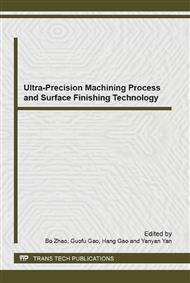p.226
p.230
p.235
p.240
p.246
p.253
p.257
p.262
p.266
Structure Simulation and Performance Test of Flexible Fixture Based on Magneto-Rheological Fluids
Abstract:
To solve the precision manufacturing of thin-walled irregular-shaped workpiece, the MR fluids flexible fixture was designed and the simulation of device with compression structure was carried out to obtain performance parameters of device for optimizing the device. Then, some experimental test was implemented to verify the feasibility of device. The simulation and experimental results show that the current and coil turns have a great influence on magnetic field, and the shear stress of MR fluids are related with magnetic field and external compression force. The experimental results are in good agreement with simulation ones.
Info:
Periodical:
Pages:
246-250
Citation:
Online since:
October 2014
Authors:
Price:
Сopyright:
© 2014 Trans Tech Publications Ltd. All Rights Reserved
Share:
Citation:


